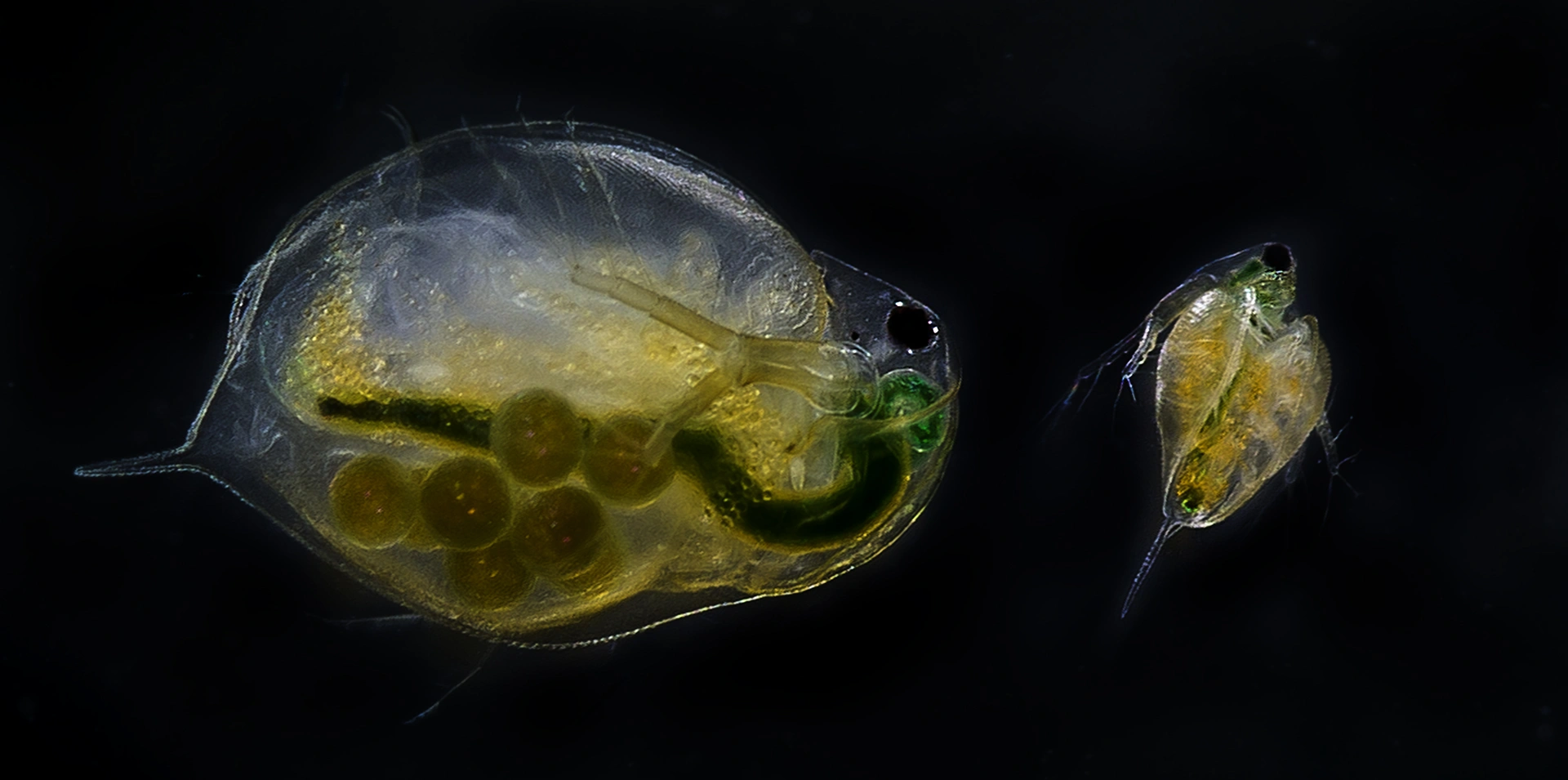Daphnia magna
Daphnia magna is a large species with rather short and stocky body shape and with a short spine, and a rather peculiar postabdomen. Among others the species is associated with rock pools which is poorly investigated in Norway.
Key characteristics
Like Daphnia pulex, D. magna also has a rather short and stocky body shape and with a short spine. In the middle of the dorsal rand there is a group of 20-25 long bristles. However, postabdomen in D. magna differs considerably from other daphnids whose hind edge is almost straight. In contrast, the postabdomen in D. Magna has two groups of about 10 coarse denticles, fastened to the hind edge where this constitutes an angle of about 45o. As in D. pulex, the abdominal claw in D. magna has a varying number of coarse denticles close to the basis. D. magna has the same reddish colour as D. pulex.
Female: Length 2.9–6.0 mm
Male: Length 2.2–3.5 mm
Ecology and distribution
D. magna is so far only found in Trøndelag, Oslo (Hovindammen) and in two small ponds in the Lofoten Islands (north Norway). The two ponds in Lofoten were strongly influenced by birds and sea-salt. They have a depth of less than 1 m and are situated near sea level, being characterized by being nutrient rich and with pH>7.
| Vitenskapelig navn | < 4,5 | 4,5 - 4,9 | 5,0 - 5,4 | 5,5 - 5,9 | 6,0 - 6,4 | 6,5 - 7,0 | 7,0 - 7,4 | > 7,5 |
|---|---|---|---|---|---|---|---|---|
| 0 | 0 | 0 | 0 | 0 | 0 | 0,4 | 1,6 |
| Vitenskapelig navn | < 1,0 | 1,0 - 1,4 | 1,5 - 1,9 | 2,0 - 2,9 | 3,0 - 3,9 | 4,0 - 4,9 | 5,0 - 6,9 | 7,0 - 9,9 | > 10,0 |
|---|---|---|---|---|---|---|---|---|---|
| 0 | 0 | 0 | 0 | 0 | 0 | 0 | 0,9 | 0,9 |
| Vitenskapelig navn | < 0,01 | 0,01 - 0,09 | 0,1 - 0,9 | 1,0 - 9,9 | 10,0 - 99 | 100 - 999 | > 1000 |
|---|---|---|---|---|---|---|---|
| 0 | 0 | 0,3 | 0,3 | 0 | 0 | 0 |
| Vitenskapelig navn | < 100 | 100-299 | 300-499 | 500-699 | 700-999 | >1000 |
|---|---|---|---|---|---|---|
| 0,5 | 0 | 0 | 0 | 0 | 0 |
